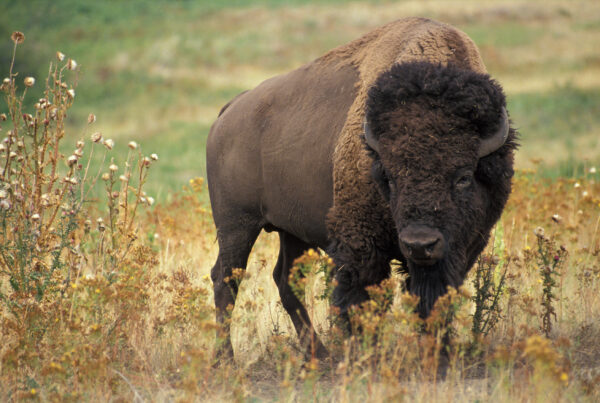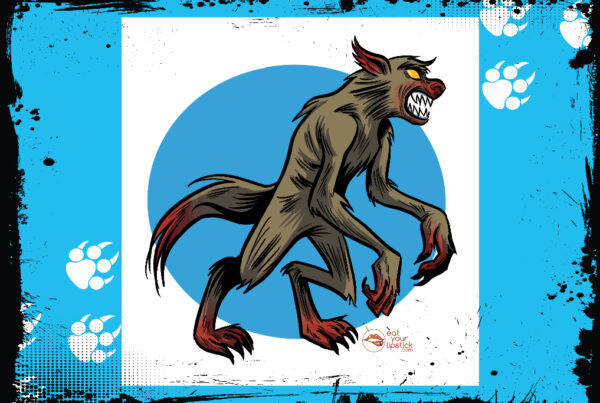Does the name Jason Voorhees mean anything to you? The hockey mask-wearing, machete-wielding horror movie icon that often comes to mind every Friday the 13th?
The fact this year’s Friday the 13th falls during the spookiest month of the year got the folks at Texas Standard thinking about all the ways people actively seek out fear… for fun.
As part of our series, Tracking Texas Cryptids, we thought we’d explore why some folks like being scared.
Art Markman, a cognitive science expert at the University of Texas at Austin, and Coltan Scrivner, a behavioral scientist with the Recreational Fear Lab at Aarhus University in Denmark, joined the Standard to explore the fascination with fear. Listen to the interview above or read the transcript below.
This transcript has been edited lightly for clarity:
Texas Standard: Colton, I want to start with you. What is it about human nature that makes thrill-seeking or the fact that people like putting themselves in those situations – you know, watching movies like Friday the 13th going to haunted houses – why do people pay to get scared?
Colton Scrivner: Yeah, that’s the question that motivates pretty much all of my work. You know, it’s something that’s not unique to humans necessarily.
So other animals do this when they find safe opportunities to do so. So, for example, a zebra will look at a lion or actually observe a lion if they feel like it’s safe to do so. The problem is they don’t find a lot of opportunities for that.
Now, with humans, we can tell stories. We can create lots of imaginative scenarios where the costs to us are very low, but the potential benefits for learning about dangerous things are still very high.
And so it’s that shift in the cost-benefit ratio that keeps us coming back for those scares, right? We like to learn about things that are dangerous when it’s safe to do so.
Art, I see you nodding. Can you tell us a bit about how our brains and our bodies process fear? What’s the upshot of that process?
Art Markman: Yeah, so the thing about fear is it’s a response that is generating all of the conditions we need for action. And so, you know, we talk about that jolt of adrenaline, but that whole idea that we’re prepping ourselves to do something is an exciting thing to do. And as Colton was saying, to be able to do that in a safe environment is kind of a thrill for us.
Adrenaline. Dopamine, perhaps?
Art Markman: You know, dopamine is really there to turn on that learning set of channels, which is useful because if you get a scare in an unexpected way, you’d like to be able to predict that again in the future.
And so that real purpose of that dopamine hit is to make sure that you actually remember that experience, which is one of the reasons why when you think about the big scares of your life, they stick with you for a long time.
» GET MORE NEWS FROM AROUND THE STATE: Sign up for Texas Standard’s weekly newsletters
Colton, historically and culturally speaking, this is nothing new. I mean, lots of people grew up with stories about the boogeyman and, you know, monsters in the closet, under the bed. Why do you think stories like these start at such a young age?
Colton Scrivner: I mean, part of it is parents and adults. And, you know, especially in the historical past, when you lived in smaller scale communities, a lot of it is adults trying to teach children in an entertaining way the things they should avoid.
So if you think about, let’s say, a thousand years ago, which is not that long ago in the grand scheme of things, there was no Internet. Most people couldn’t read. Pretty much the only way you could learn something was through an oral story or by experiencing it yourself.
And so if you think about a story that’s at least in Europe and Asia, very widespread, something like Little Red Riding Hood. Now, if you think about the scene in Little Red Riding Hood, where she meets the wolf dressed as her grandmother, that whole scene is really just describing what wolves look like and what their different features are. So if she says, you know, “oh, grandmother, what big ears you have,” and the wolf says, “well, it’s all the better to hear you with.”
And she says, “what big what big arms you have” and she says, “that’s all the better to hug you with, to grab you with.” And then, of course, it gets on and on about the eyes being big and she can see better, and the teeth and that’s when she says, “well, that’s all the better to eat you with.”
And so if you’re a kid a thousand years ago, your only exposure to anything like a canine, it’s probably your dog who’s friendly. And so you probably don’t have a good conception of, you know, if you go out into the forest and you come across another dog, it’s going to be dangerous, right? And it’s going to be dangerous for the reasons that this wolf is telling you. It’s got big arms. It can grab you. It’s got big eyes. So it can see you from far away. It’s got big ears here, you know, big teeth. And that’s what it uses to eat you.
And so it’s a really fun, kind of engaging way to get kids to think about the kinds of dangers they’ll face.
I get that. But, you know, “Grandma, what a big chainsaw you have.” I mean, this seems a bit weird. We’re talking about it on a different scale. I know there’s a fascination with certain kinds of myths for which there’s really little direct evidence similar to, like the dangers from machete-wielding mask-sporting killers. Cryptids we’ve talked about quite a bit during the course of this month. UFOs out there, aliens. Is there a distinction with all of this?
Art Markman: Well, you know, I think all of us love to have knowledge that other people don’t have. When you find out something that other people don’t know, you feel a little bit better about yourself and you actually want to then share that with people.
And I think that these myths that sit right at the margins where not everybody believes in them and not everybody has the full amount of information, if you can really dig into that and and get involved in the lore, on the one hand, you have a little bit of a tribe that you can hang out with that shares that fascination.
But it’s also one of these things that you can begin to share with other people. “Hey, check out this photo. Check out this this new report that just came out.” You know, what a mystery this is.
And, you know, the beauty of most of these things is they’re they’re incredibly hard to verify. You know, the stories around them themselves are set up in a way that they give plausible deniability when there’s an absence of evidence. And so it becomes a little bit self-perpetuating. But it can be great fun if it’s treated in the right way.
You know, Colton, I’m sure there are plenty of listeners who are thinking, “wait a minute, I hate being scared. And I avoid every such instance.” You know, when it comes to horror movies or ghost stories, that’s not abnormal, is it?
Colton Scrivner: No. You know, human traits sort of exist on this spectrum where, for most traits, you have most people have some of it, a lot of some people have a little bit of it and some people have a lot of it, right? So that’s kind of this normal distribution of traits – a spectrum of it.
And so if you enjoy being scared, you know, maybe you fall a little closer to the right end of that spectrum. But the same thing is true if you think like, “oh, well, humans are built to be social, so surely being extroverted is the norm.”
But that’s not necessarily the case either. You have some people who are very extroverted, some people who are very introverted, and most people are somewhere in the middle, right? And so I think, you know, morbid curiosity or sort of enjoying recreational fear, those are traits that exist along the spectrum like any other trait.














